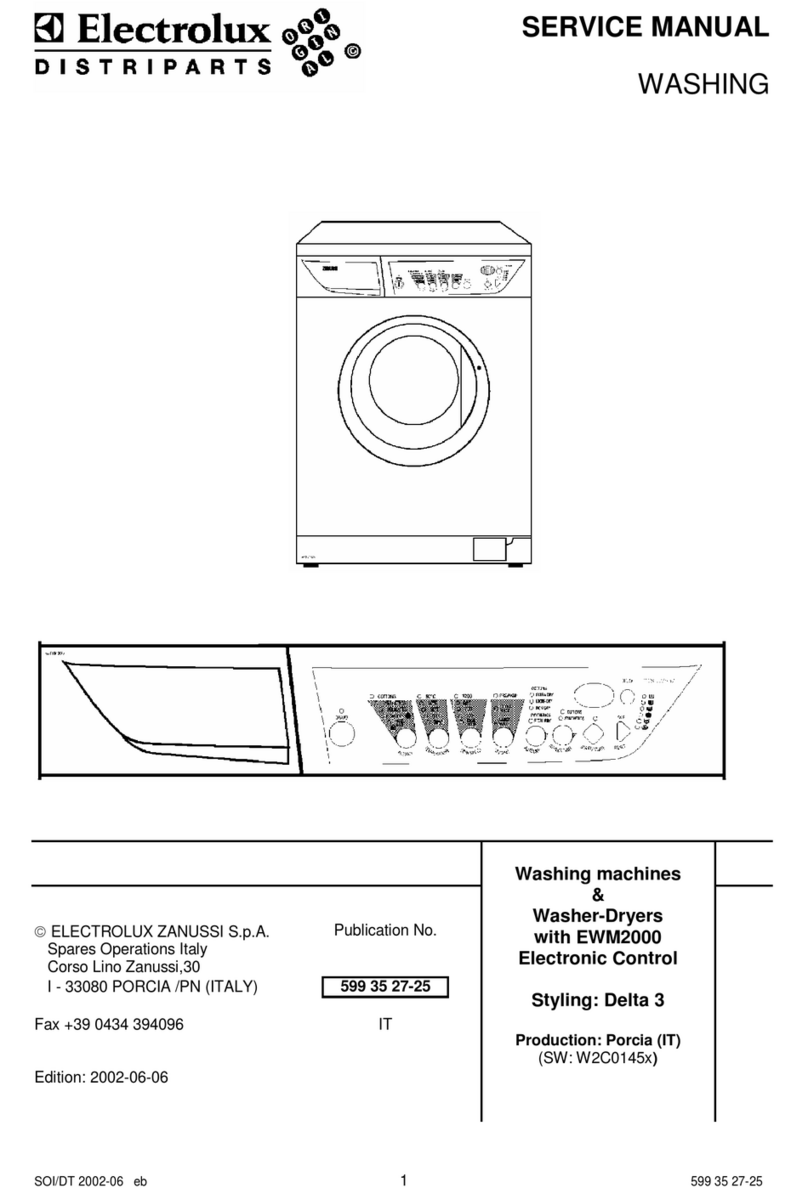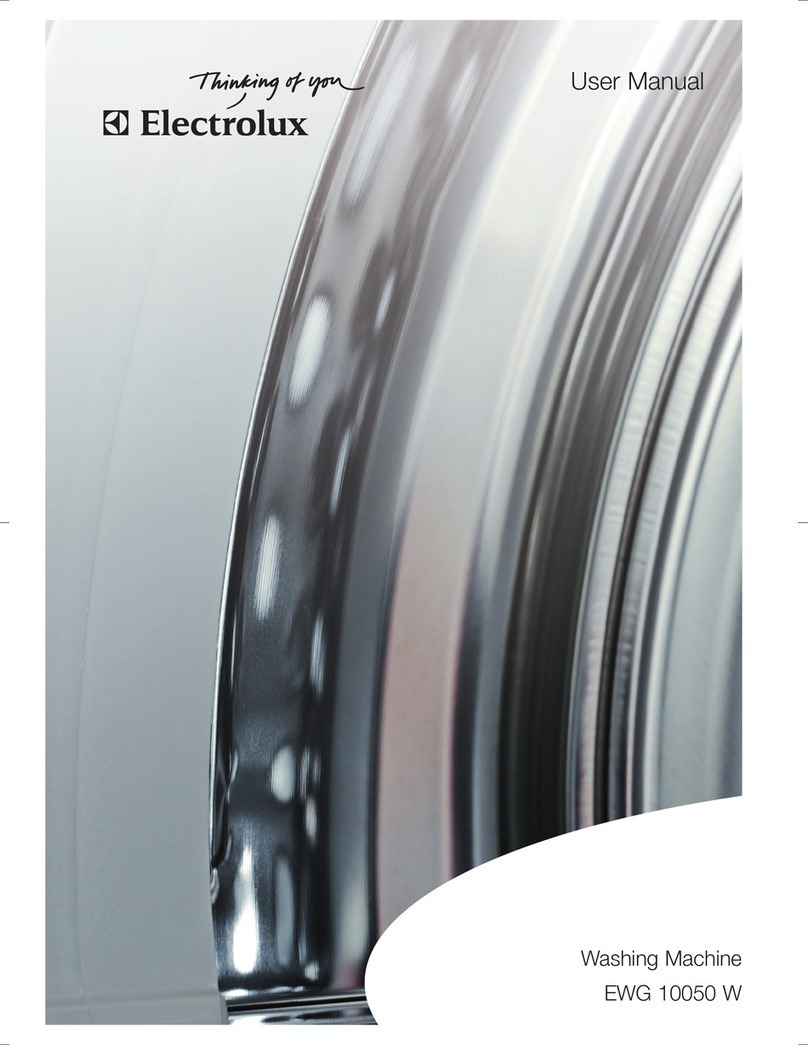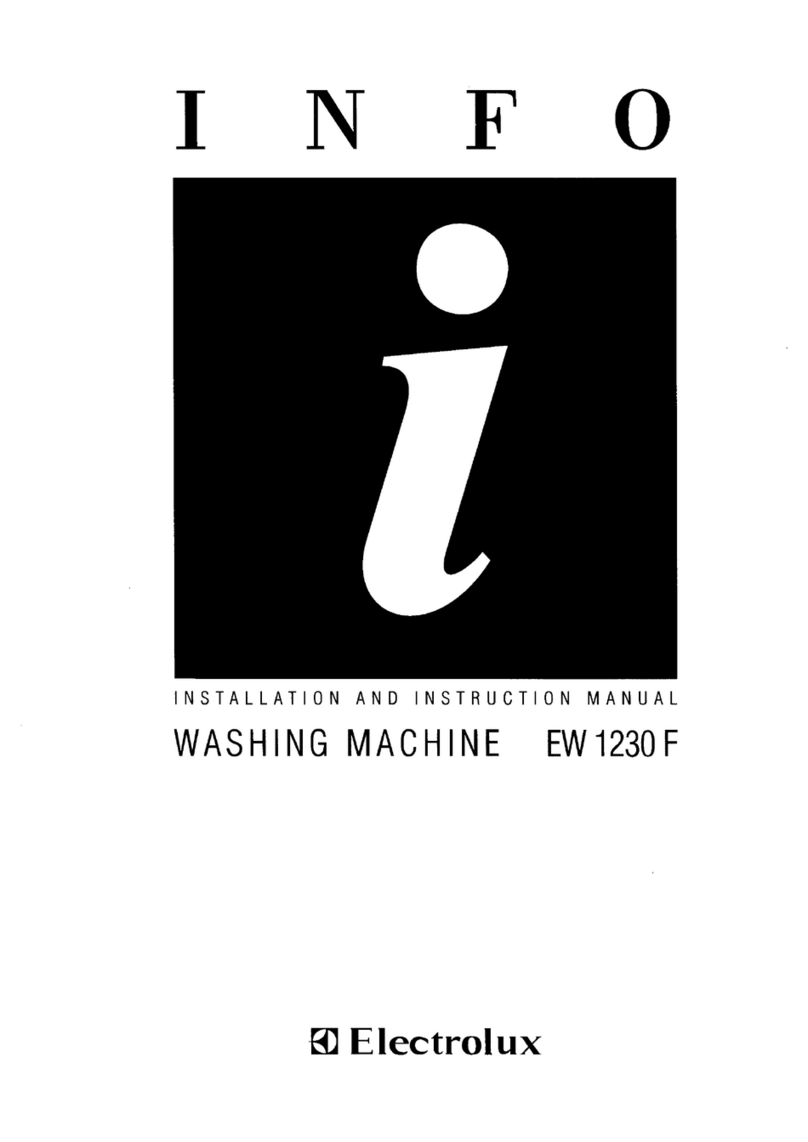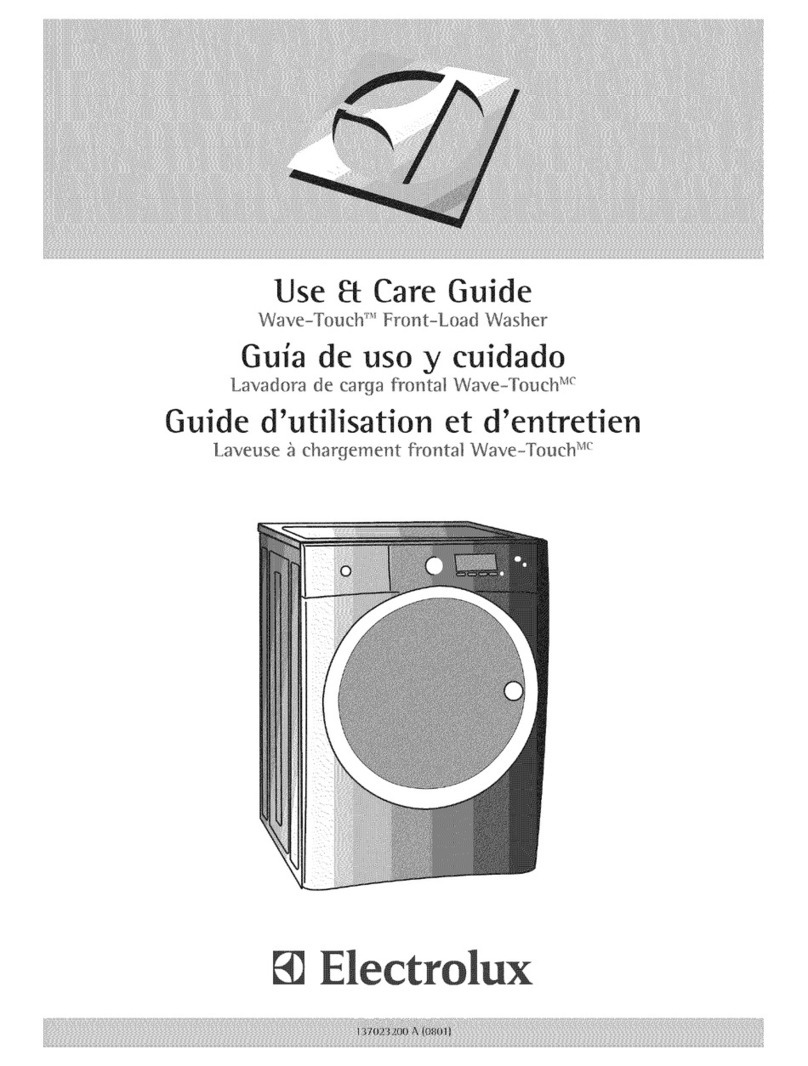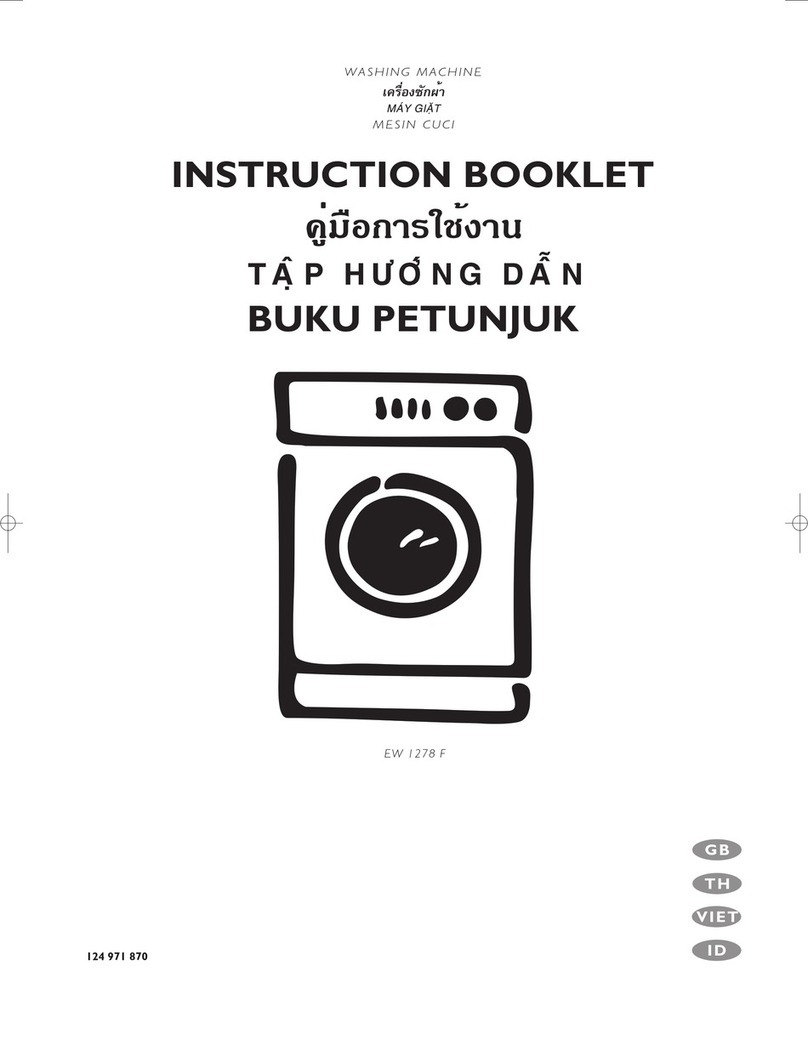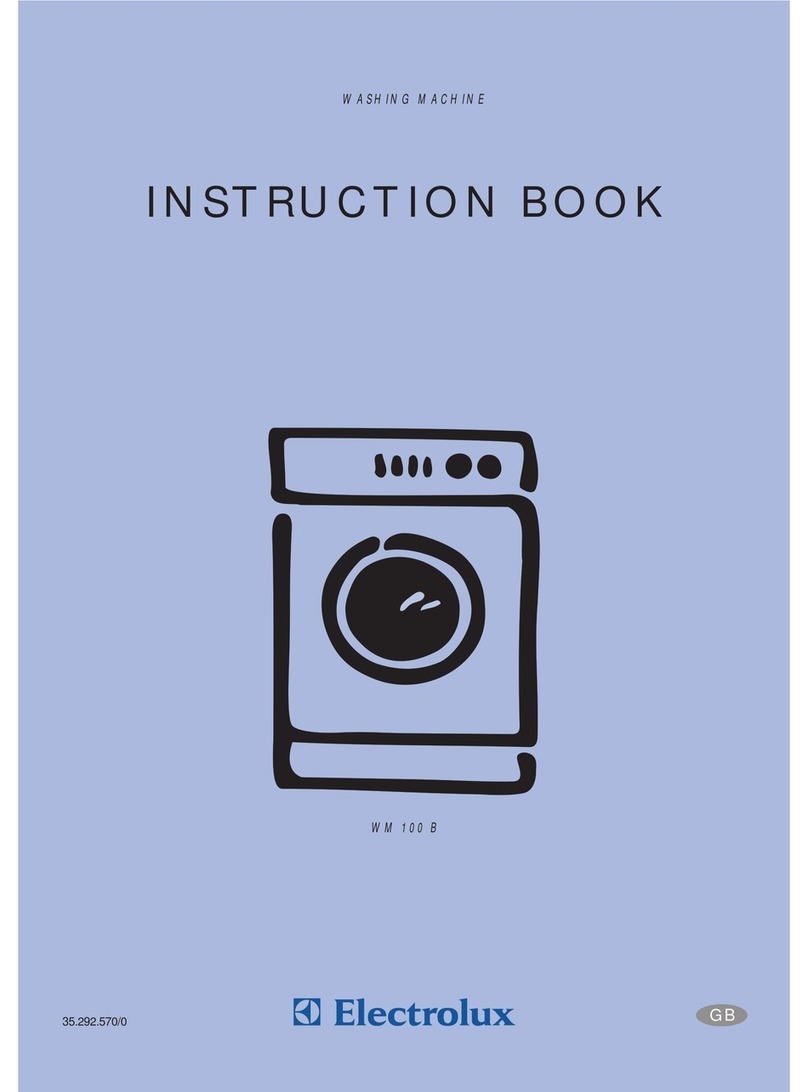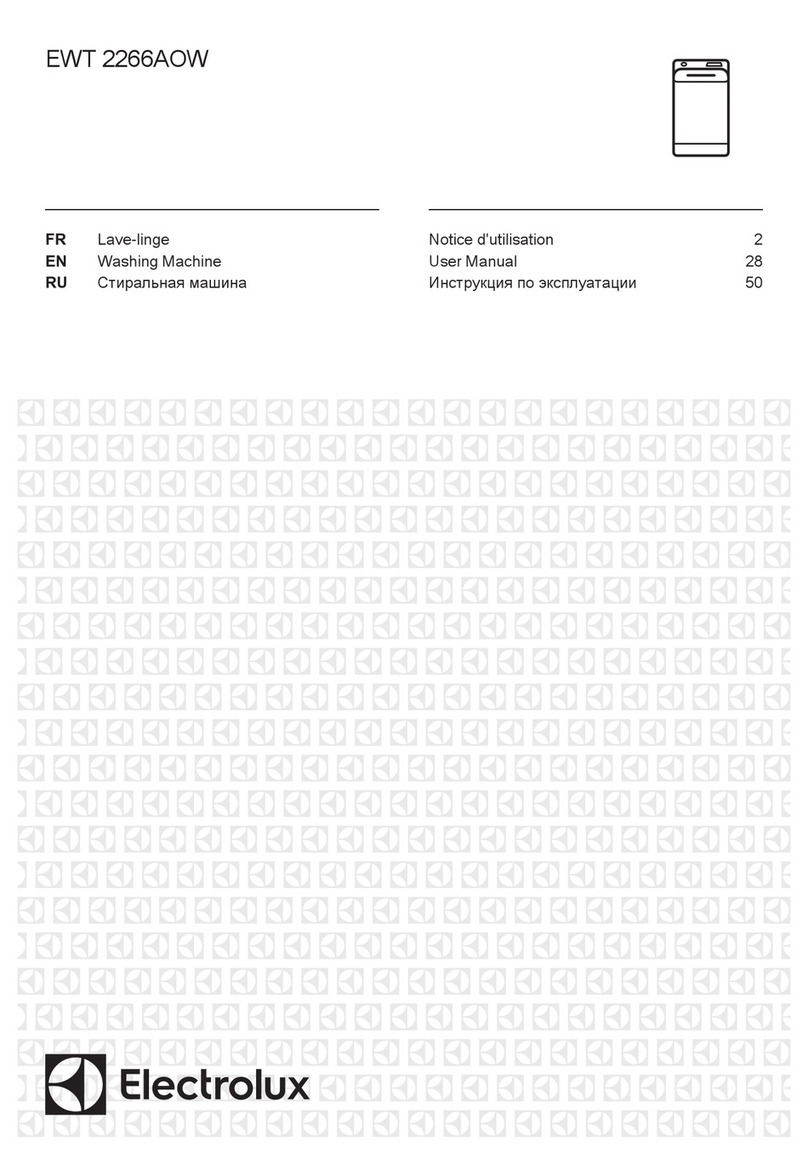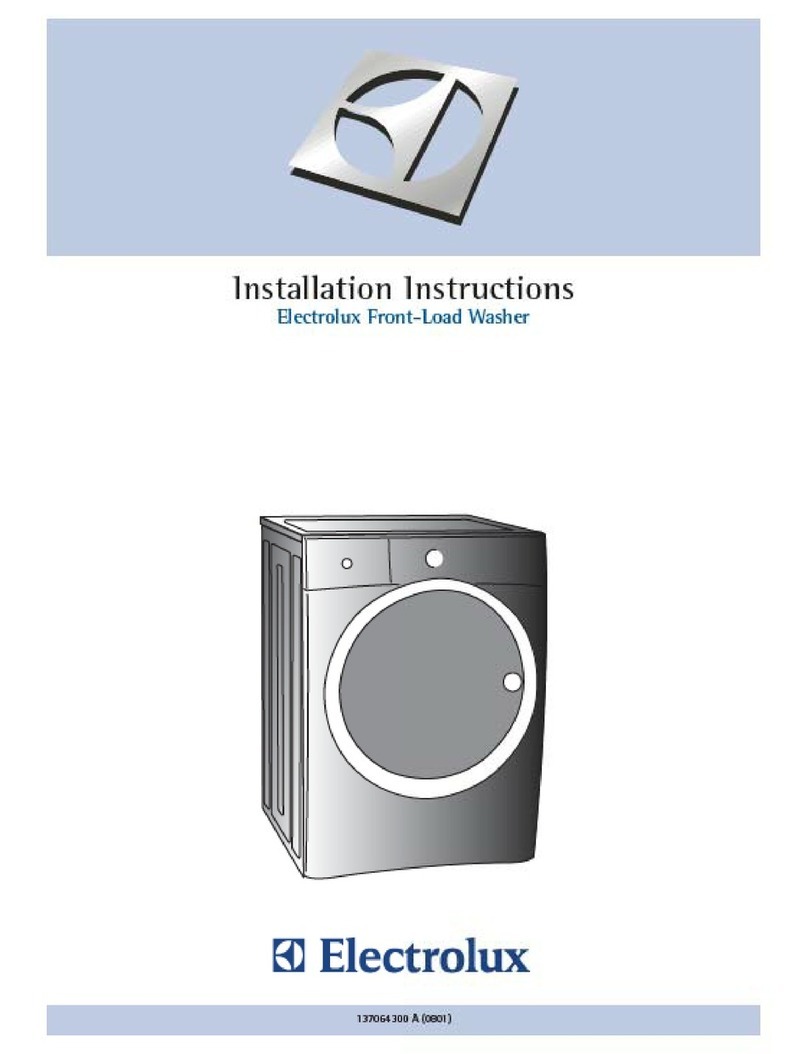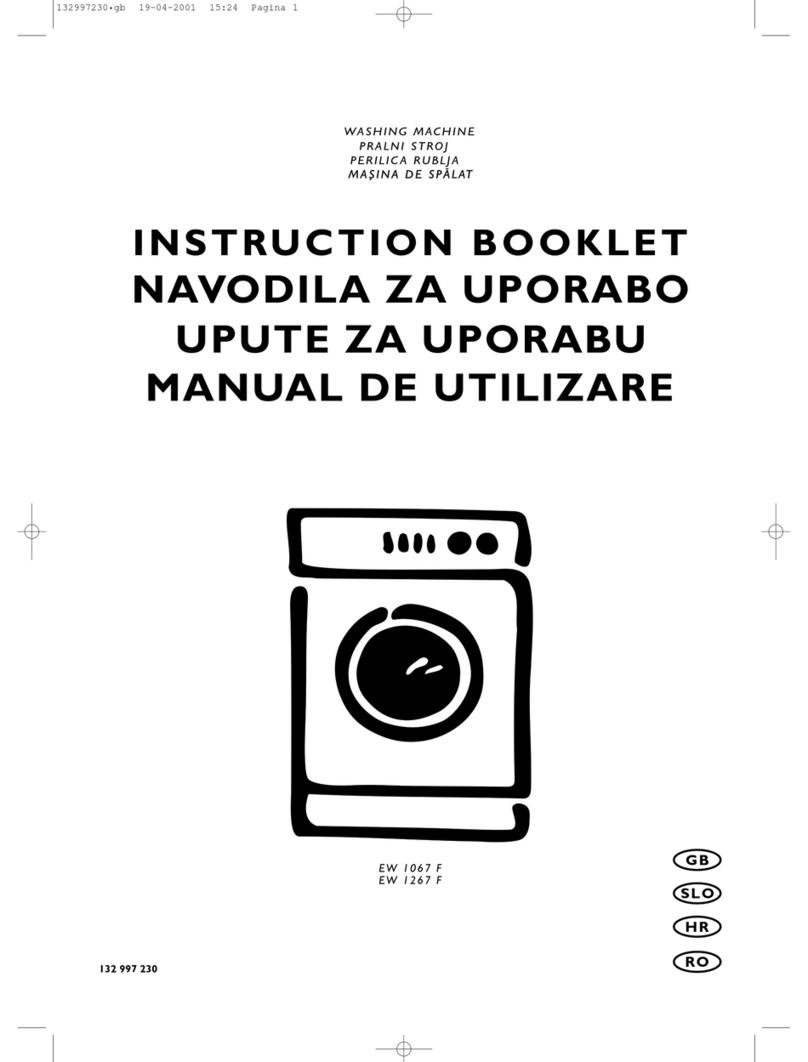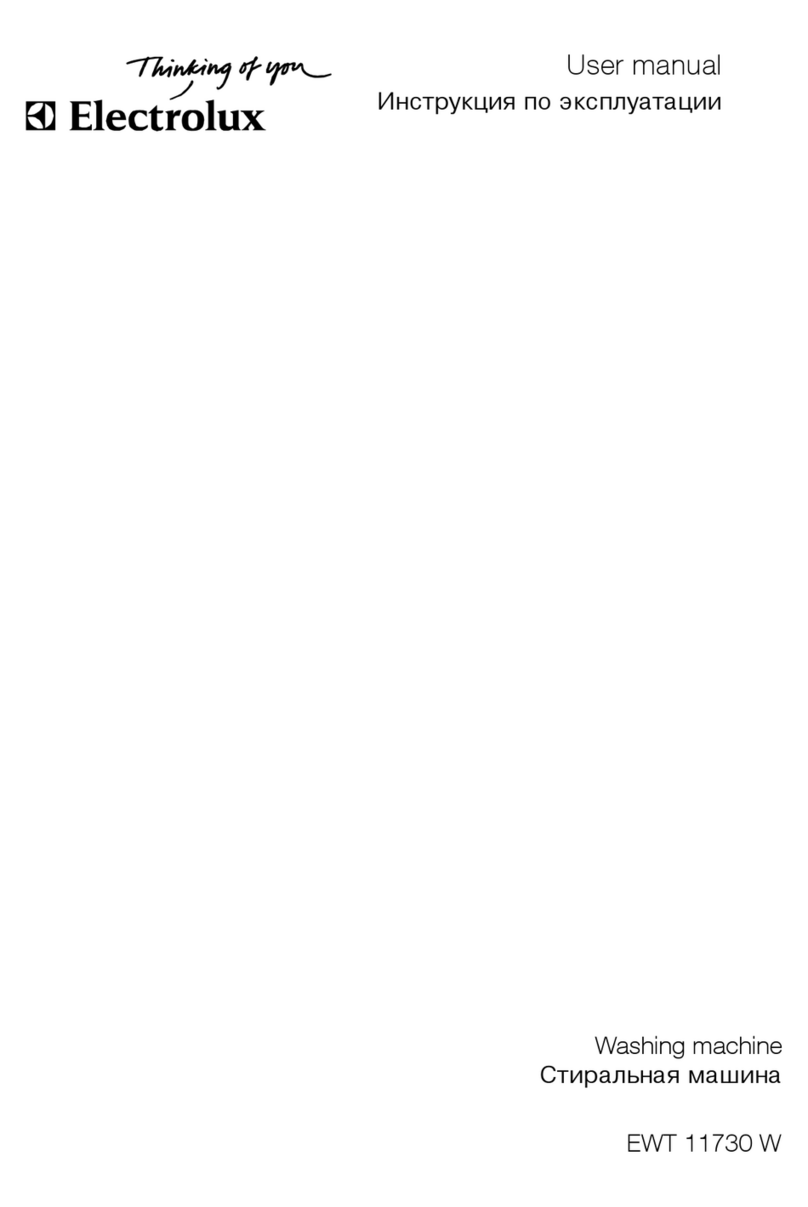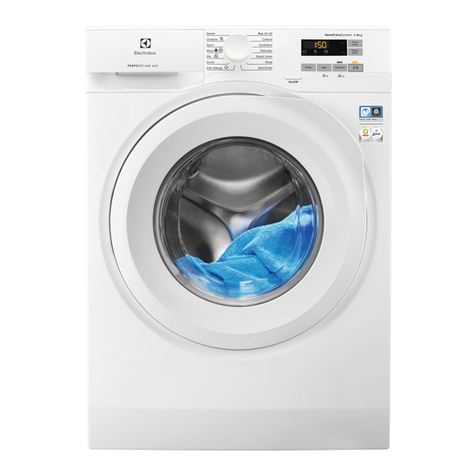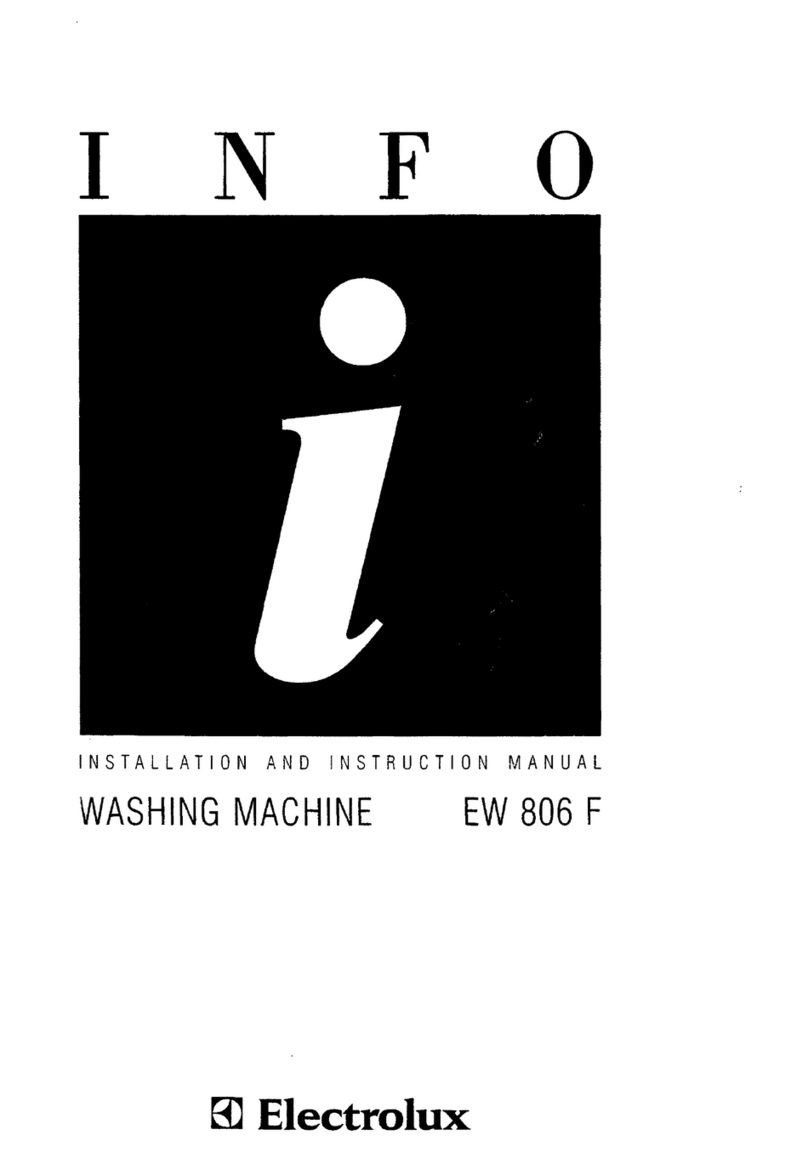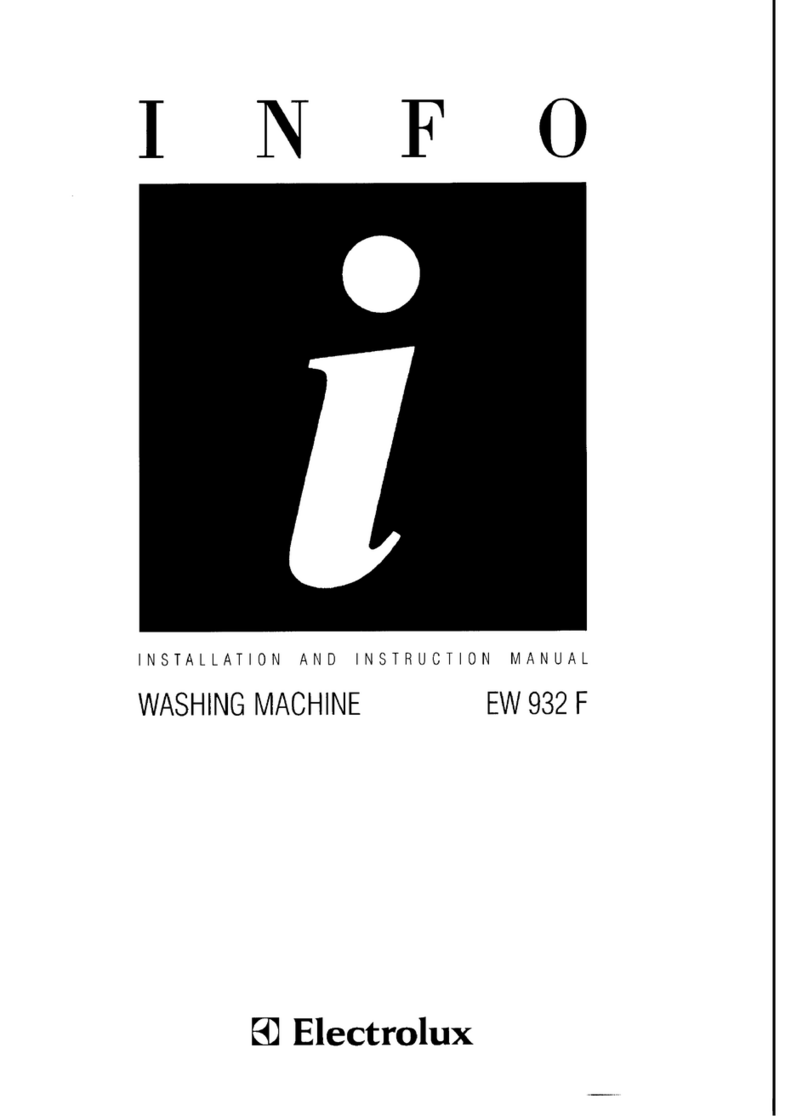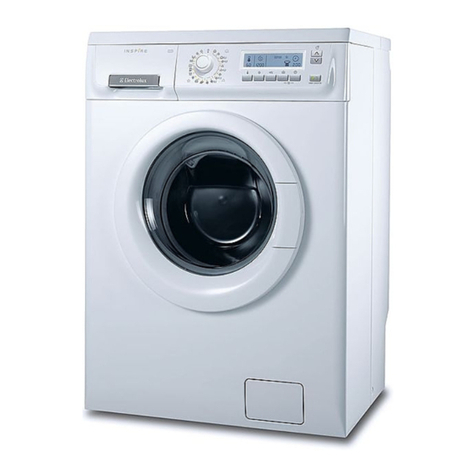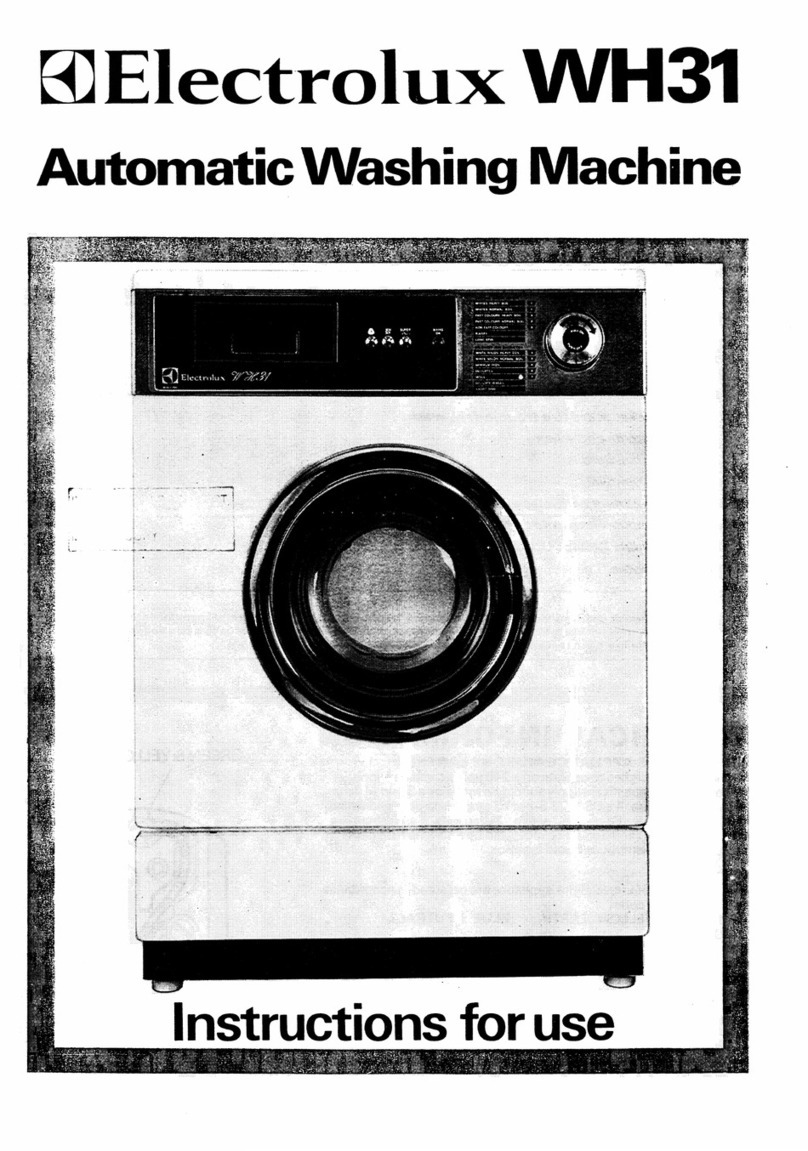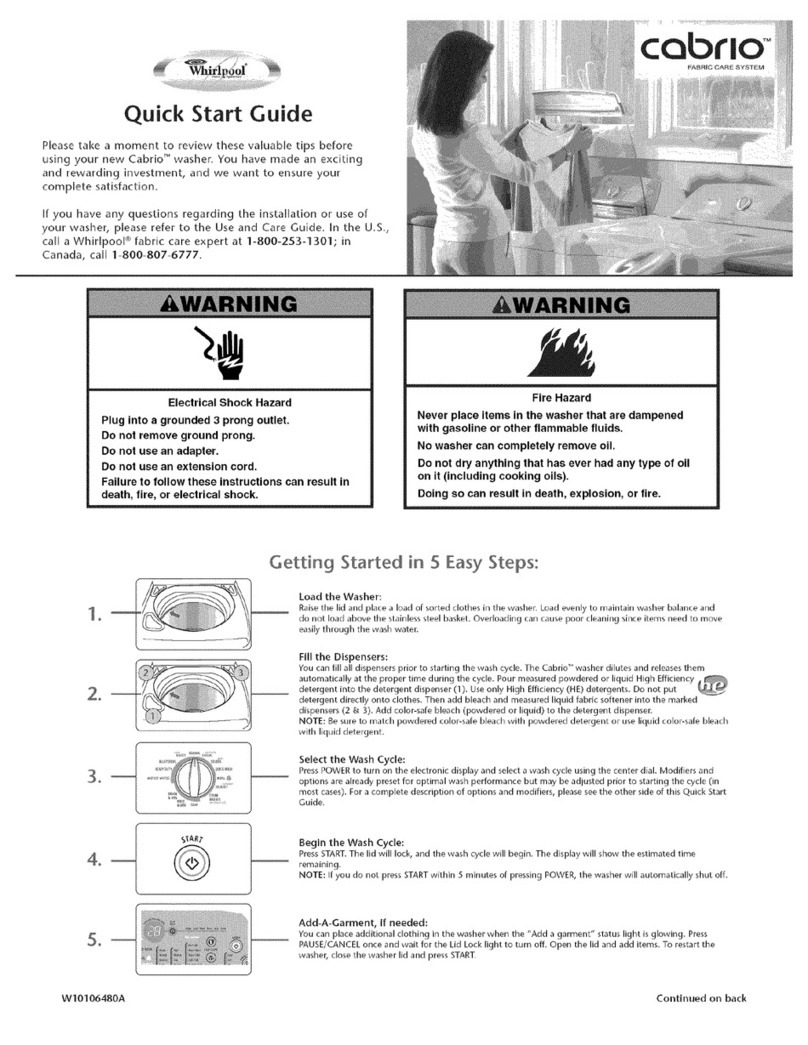3
Important Safety Instructions, continued
PROTECT CHILDREN
Do not allow children to play on or in the washer. Close su-t
pervision of children is necessary when the washer is used
near children. As children grow, teach them the proper,
safe use of all appliances.
Destroy the carton, plastic bag and other packing materi-t
als after the washer is unpacked. Children might use them
for play. Cartons covered with rugs, bedspreads or plastic
sheets can become airtight chambers.
Keep laundry products out of children’s reach. To preventt
personal injury, observe all warnings on product labels.
Before the washer is removed from service or discarded,t
remove the washer door to prevent accidental entrapment.
Failure to comply with these warnings could result in seri-t
ous personal injuries.
PREVENT INJURY
To prevent shock hazard and assure stability during opera-t
tion, the washer must be installed and electrically grounded
by a qualified service person in accordance with local
codes. Installation instructions are packed in the washer for
installer’s reference. Refer to INSTALLATION INSTRUCTIONS
for detailed grounding procedures. If the washer is moved
to a new location, have it checked and reinstalled by a
qualified service person.
To prevent personal injury or damage to the washer, thet
electrical power cord of the washer must be plugged into a
properly grounded and polarized 3-prong outlet. The third
grounding prong must never be removed. Never ground
the washer to a gas pipe. Do not use an extension cord or
an adaptor plug. Regularly clean the power plug to remove
dust and dirt to avoid contact failure. Insert power plug into
socket completely.
Pull out plug from socket if machine is not in use. Do not
pull on the electric cord when pulling out the plug. Do not
pull out or insert plug with wet hands to avoid electric shock.
Follow package directions when using laundry products.t
Incorrect usage can produce poisonous gas resulting in
serious injury or death.
Do not combine laundry products for use in 1 load unlesst
specified on the label.
Do not mix chlorine bleach with ammonia or acids such ast
vinegar.
- FIRE/ELECTRICAL SHOCK HAZARD -
Avoid fire hazard or electrical shock. Do not use an adapter
plug or extension cord or remove grounding prong from
electrical power cord. Failure to follow this warning can cause
serious injury, fire or death.
- HARMFUL VAPOR HAZARD - Do not use
or mix liquid chlorine bleach with other household chemi-
cals such as toilet cleaners, rust removers, acid or products
containing ammonia. These mixtures can produce dangerous
fumes which can cause serious injury or death.
PREVENT INJURY AND DAMAGE TO THE WASHER
To prevent serious personal injury and damage to the washer:
All repairs and servicing must be performed by an autho-t
rized servicer unless specifically recommended in this Use &
Care Guide. Use only authorized factory parts.
Do not tamper with controls.t
Do not install or store the washer where it will be exposedt
to the weather.
Do not install on carpet. Install washer on a solid floor. Itt
may be necessary to reinforce the floor to prevent vibration
or movement.
To reduce the risk of electric shock, disconnect this appli-t
ance from the power supply before attempting any user
maintenance. Turning the controls to the OFF position does
not disconnect this appliance from the power supply.
To prevent injury, do not reach into the washer while partst
are moving. Before loading, unloading or adding items,
push in the cycle selector knob and allow the drum to come
to a complete stop before reaching inside.
Failure to comply with these warnings could result in seri-t
ous personal injuries.
Do not directly rinse the machine with water when cleaning.
Do not place on the washer burning candle, mosquito-
well as electric stove, air heating fan and other heating
sources.
tt
